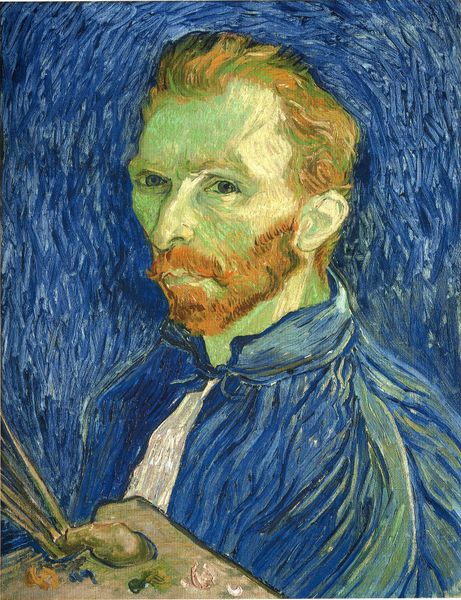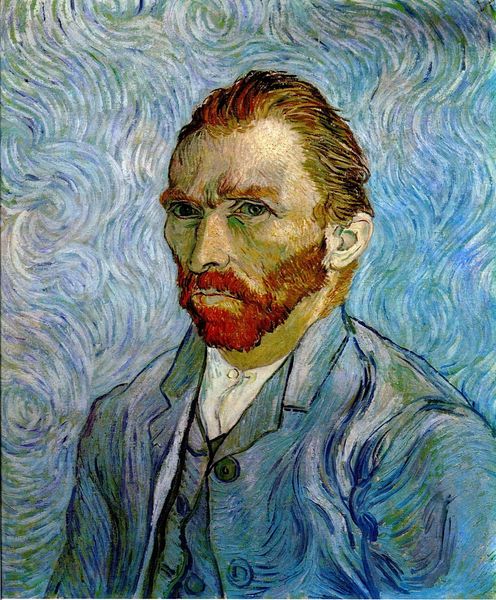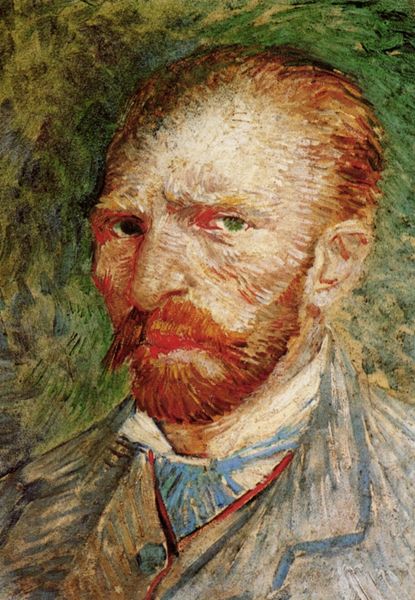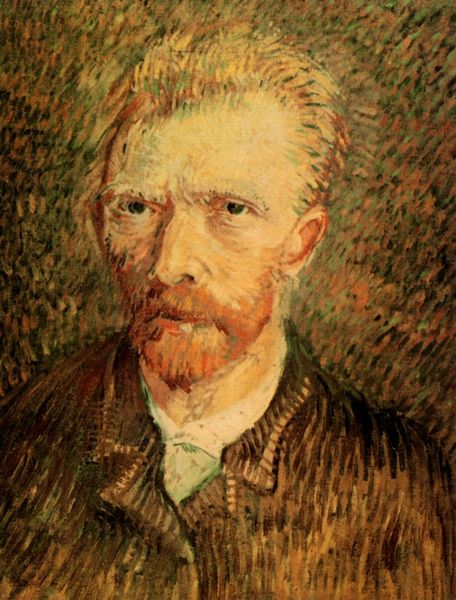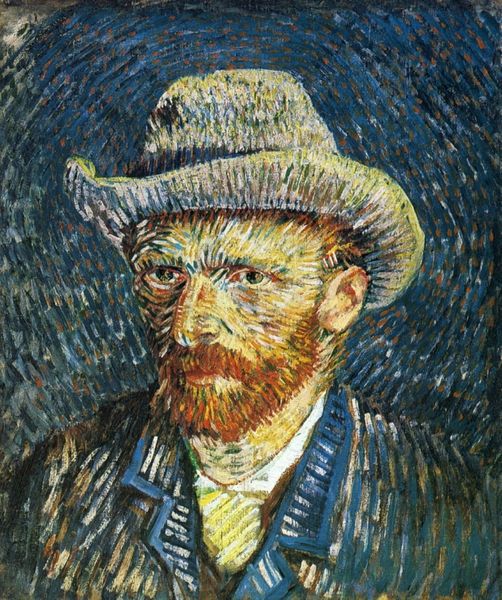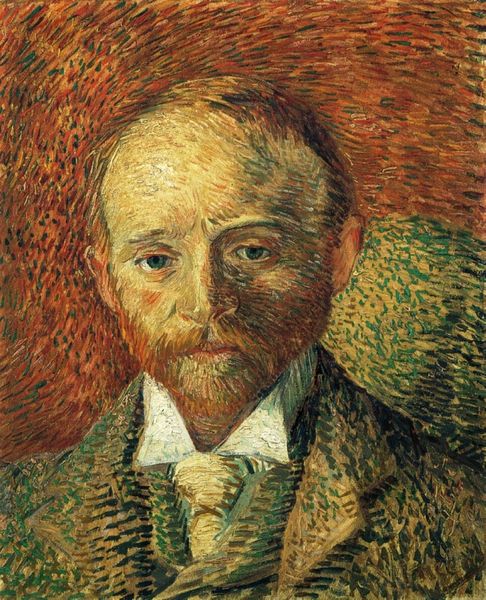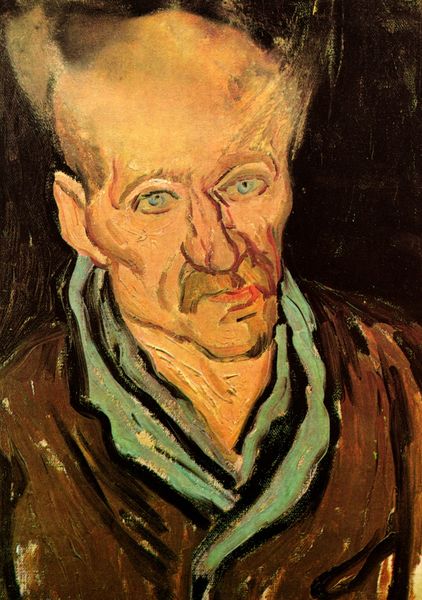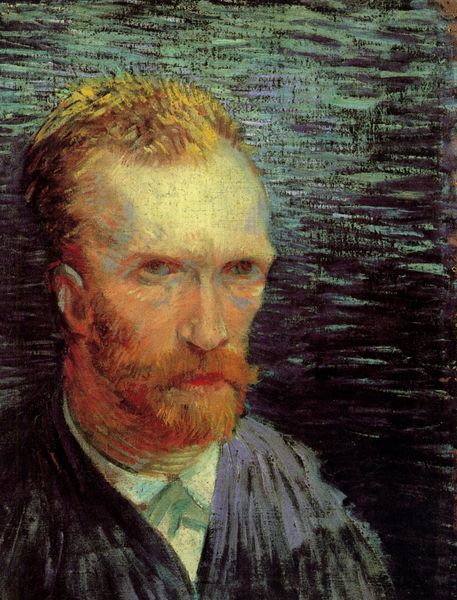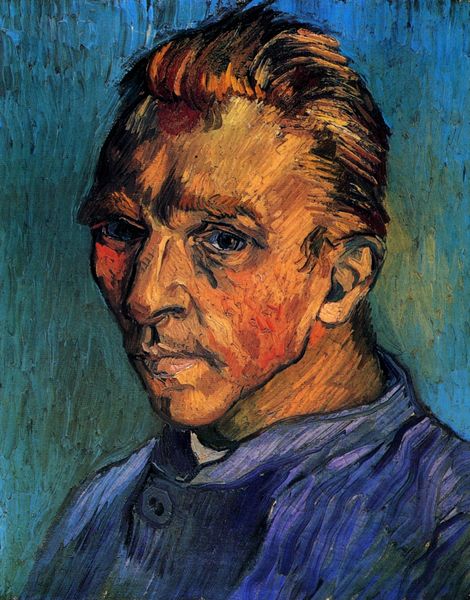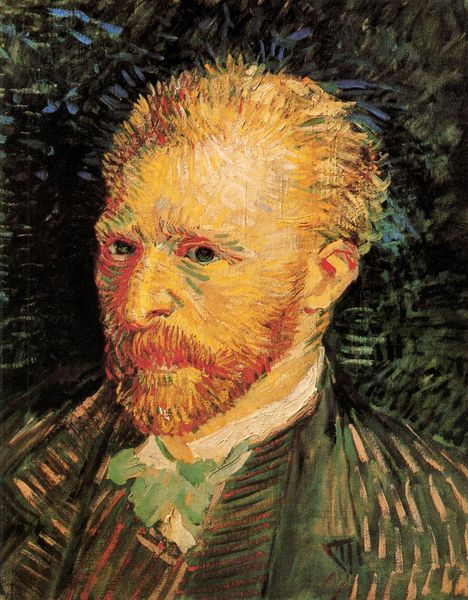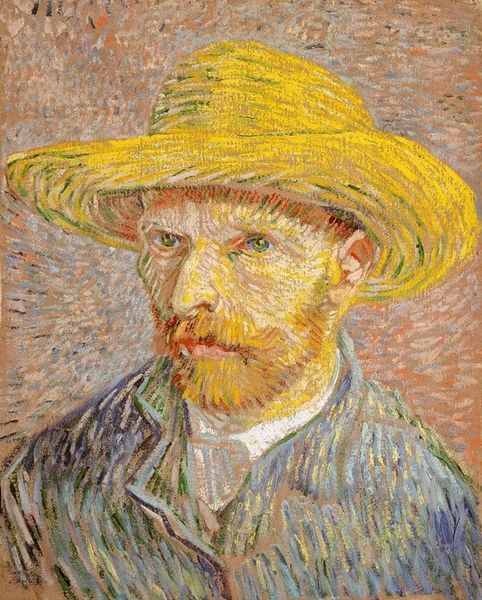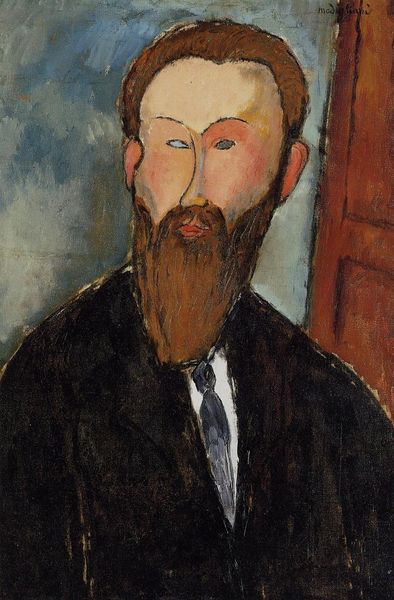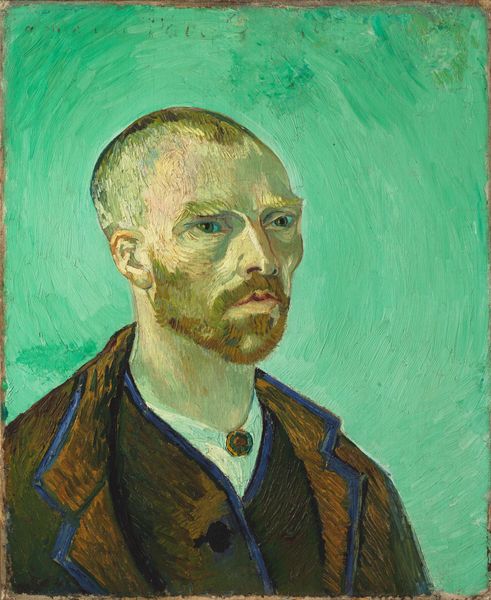
Dimensions: 55.5 x 45 cm
Copyright: Public domain
Curator: Looking at this “Self-Portrait,” created by Vincent van Gogh in 1889, one is immediately struck by its swirling energy. Editor: Yes, it's almost frantic. The blue-green background seems to be moving around him. Is he conveying inner turmoil through this vortex of color? Curator: Precisely! Considering the sociopolitical context is vital. Van Gogh painted this while at the asylum in Saint-Rémy. This period speaks volumes about institutional attitudes toward mental health. How does societal rejection shape one's identity? Editor: Absolutely, it's essential to remember the setting and constraints he was living under at the time. It humanizes the work so profoundly. And think about his limited resources—how that likely informed his materials and his mark-making. Curator: Right, the visible impasto technique isn’t merely stylistic; it can also reflect resourcefulness born out of precarity. What meanings, then, can we ascribe to art when the very material reality mirrors lived inequalities? Editor: Indeed. And how does the art market itself play into this narrative? It elevates individual suffering, and the artwork's value might be amplified because of Van Gogh's history. It becomes this commodified symbol. Curator: Which leads to crucial dialogues concerning class, mental health and who has access to create and view art in institutional settings. Editor: These types of nuanced dialogues are essential because his pain becomes a part of art history as a whole. Curator: Van Gogh’s ‘Self-Portrait' speaks not only about a singular genius but about the sociopolitical framework through which the genius was both enabled and constrained. Editor: Thinking about it all is an intense journey into societal power dynamics, isn't it? Art makes you consider what it truly represents when viewed by audiences today.
Comments
No comments
Be the first to comment and join the conversation on the ultimate creative platform.
